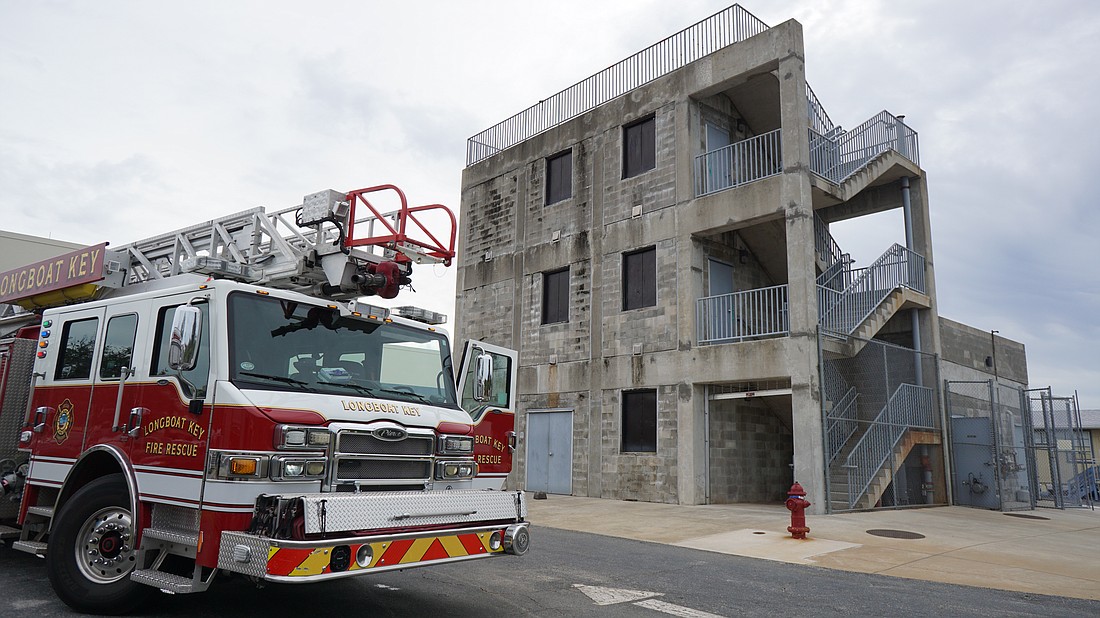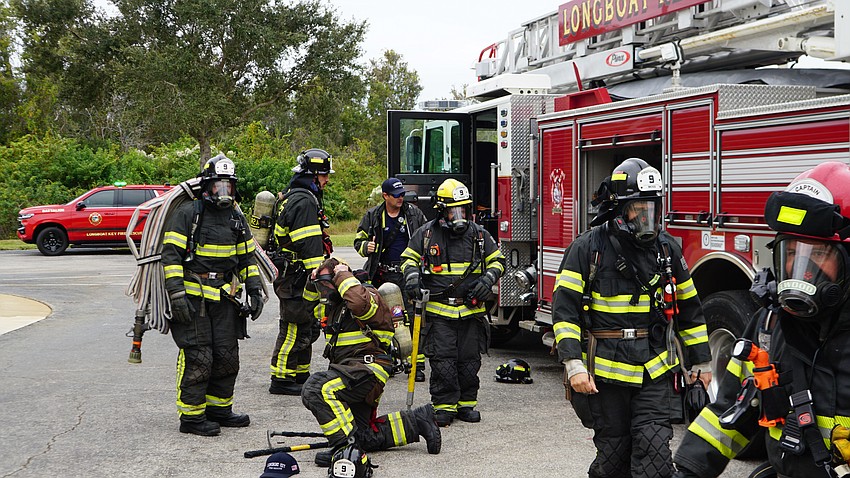- May 1, 2025
-
-
Loading

Loading

Longboat Key Fire Rescue may not see as much action as neighboring departments, but the department ensures all its firefighter paramedics are ready to handle the heat.
The crew finished up their second live fire training of the year, with each shift taking turns on a different day and going through the simulations at the Manatee Technical College Fire Academy.
While the department is only required to perform one live fire training a year, Longboat Key Fire Rescue does two.
“In Longboat Key, we try to not only meet the standard but also exceed it,” Training Captain John Elwood said.
He’s been Longboat’s training captain for five years, and in the fire service for 41 years. Training is the foundation of any organization, he said, and it’s something he has a passion for.
“I just want to see that the public gets the services that they pay for, and that our firefighters have the latest training techniques and equipment possible so that they can perform at an optimal level, ” Elwood said.

The crews met at MTC to tackle the three-story building simulation. Longboat Key’s B Shift, led by Assistant Chief Martin Szalbirak, came ready on Thursday morning.
Everyone is required to walk through the building first before the simulation begins. Elwood said it’s an important safety measure to prevent accidental deaths during a simulation.
In the building, fires are simulated as best as they can be. Temperatures reach 500 degrees Fahrenheit in the drill, but in real life Elwood said the temperature at the ceiling of a fire could reach upwards of 2000 degrees Fahrenheit.
Today, fires spread quicker and more ferociously than ever before, Elwood said in regards to the high temperatures. Many homes are built with plastics and synthetic materials. Those materials, he said, create hotter and faster fires.
“A fire could double in size every two minutes,” Elwood said.
The training simulation was split into phases, and the B shift crew split in two. One crew tackled the live fire downstairs, while another checked for victims on the second floor as it billowed with smoke from the fire below.
Szalbirak acted as the dispatch for the day, calling in the fire. When the crew received the call, Lieutenant Brandon Desch began managing the crew.
On a real call, an assistant chief like Szalbirak would be the logistics person. But during these training exercises, the lieutenants get to take turns preparing themselves for a scenario in which the assistant chief was off-duty.
After the call comes in, five of the firefighter paramedics begin breaching a fake door. They use fire entry tools to break open a door.

Then, once they are through the door, the crew of five proceeds into the building and to the first fire: a living room fire with a couch in flames.

They have to quickly extinguish that one before moving onto the next fire. A mock kitchen is up in flames, produced by a button on the outside of the building. In about 10 minutes, the fires are out.
While one crew is handling the first-floor fire, another crew makes its way to the second floor.
High-rises are common on Longboat Key, and fires in those buildings require a different set of tools.
Firefighter paramedics have to carry extra hoses and connections with them up the stairs to connect to water lines in stairwells. All that extra gear can add about 100 pounds to a person, Elwood said.
Before entering the building with a hose, a couple of the firefighter paramedics clear the hose. Szalbirak said this is to make sure there’s no excess air trapped in the hose, which would only fuel a fire.

As the team enters the second floor, Firefighter Paramedic Ron Franklin sets up the ladder on the face of the building closest to the team’s entry point. In a real scenario, they have to expect the unexpected, which might mean the stairwell becomes compromised.

In the second flood, the smoke-filled room doubles as a maze. This tests the firefighter's senses, Elwood said. Sight is compromised because of the smoke, and all they really have is their sense of touch.
As they crawl their way through the obstacle, firefighter paramedics need to feel around for arms, legs or other body parts and identify trapped victims. They successfully save the test dummies from the smoking room.
After one trial, the simulation is reset and the crews of five swap positions. It’s the last training of 2023.